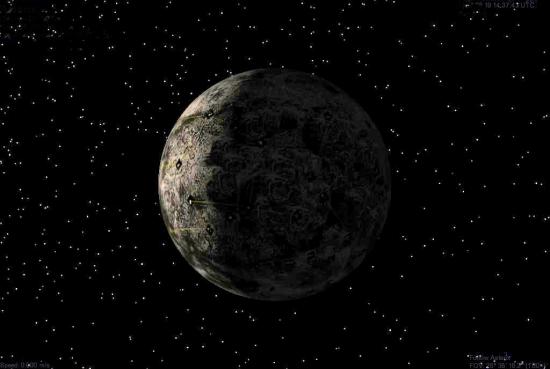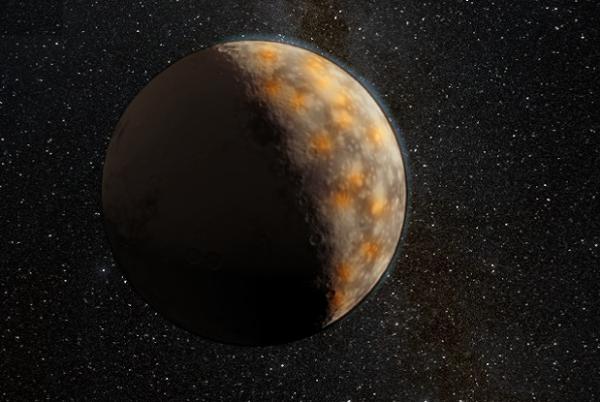BY LETTER
Ferrinian Type
Iron-rich worlds | |
 Image from Steve Bowers | |
| A hot ferrinian world, Duanzao has lost almost all its crust and volatiles due to heating by the local star | |
These worlds form either in very close solar orbits or about very hot and active suns. In either case, much of the lighter planet-building material has been blown away by the intense young solar winds or separated by other active processes in the protoplanetary cloud. In some cases ferrinian worlds are the product of large and energetic collisions in the early history of the system, powerful enough to vapourise most of the crust and non-metallic elements. This leaves only heavier elements behind, such as iron and nickel. Such worlds tend to be small, although they may attain very large sizes in high metal content systems.
 Image from Steve Bowers | |
| Asterix, an iron-rich world in the Sadalmelik system | |
Often, ferrinian worlds are found near the local star in tight orbits, and many have become tidally locked because of this. Since ferrinian worlds usually have minimal atmospheres, the dark side of such worlds may cool down and even retain a few ice deposits. Although some hot ferrinian worlds support colonies on the sun-ward hemisphere, these are restricted to sophonts capable of thriving in high-temperature conditions; other sophonts who prefer cooler conditions tend to prefer to inhabit the dark hemisphere.
In the Extended Word Classification System (EWoCS) iron-rich worlds are also classified as Ferrinian worlds.
Examples; Asterix, Singapore, Duanzao, Scott, Fujin.
 Image from Steve Bowers | |
| Singapore, a dense ferrinian world in the 61 Cygni A system | |
Related Articles
Appears in Topics
Development Notes
Text by John M. Dollan in his Planetary Classification List
additional material by Steve Bowers
Initially published on 29 October 2001.
additional material by Steve Bowers
Initially published on 29 October 2001.






